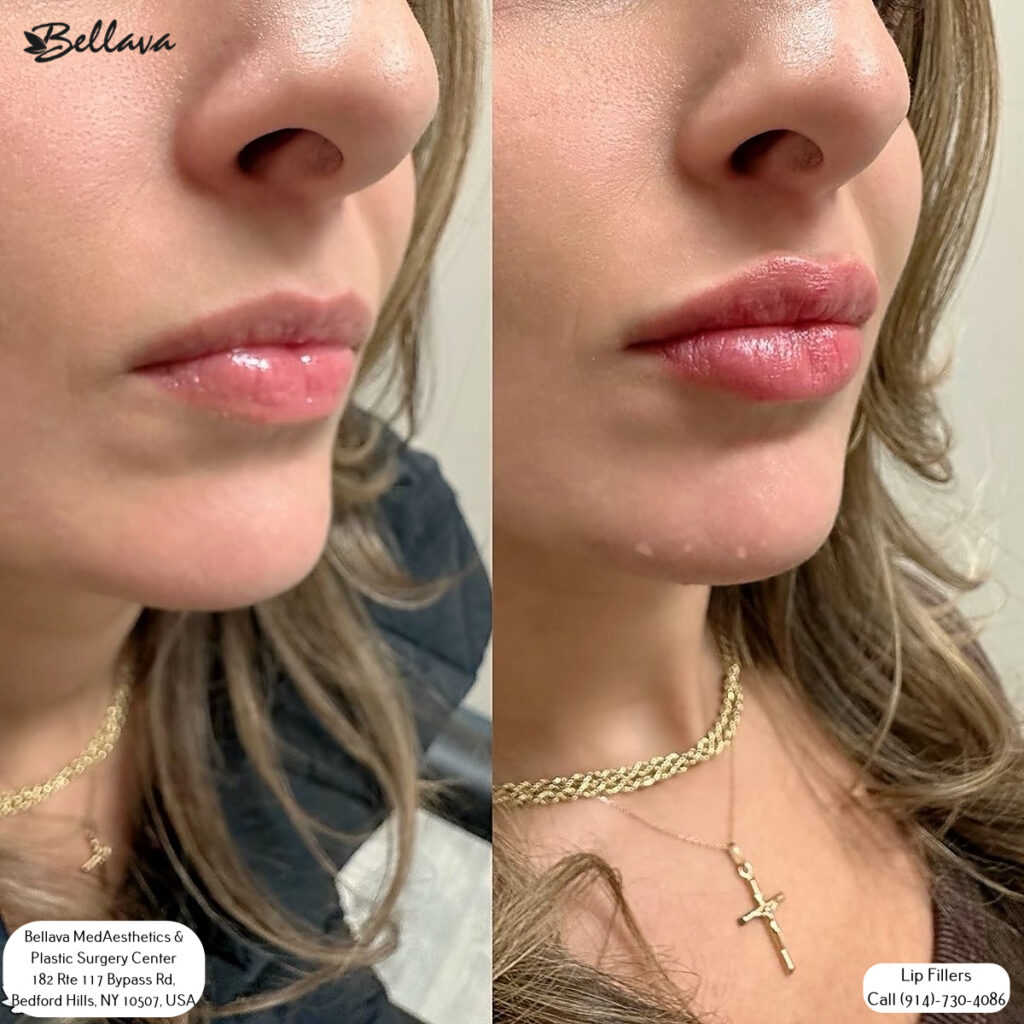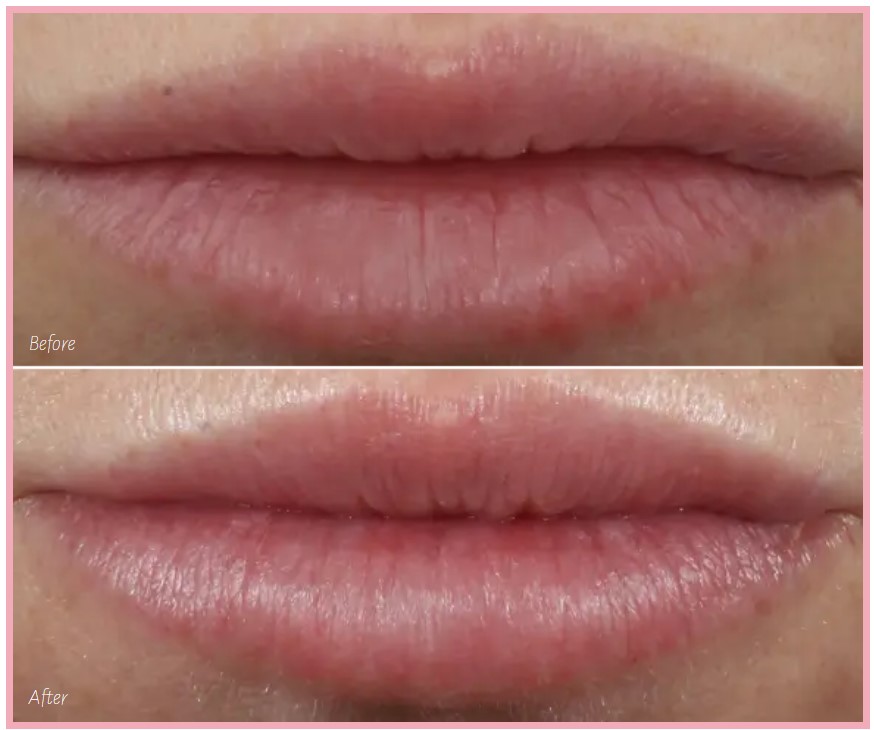Have you ever wondered what happens when lip fillers don't go as planned? Lip filler migration is a growing concern among those seeking cosmetic enhancements. This phenomenon occurs when dermal fillers used in lip augmentation shift from their original placement, leading to unwanted results. Understanding this issue is crucial for anyone considering lip enhancements.
Lip filler migration photos have become a topic of discussion in the beauty and cosmetic industry. These images often highlight the potential complications that can arise from poorly administered treatments. As the demand for non-surgical cosmetic procedures continues to rise, it is essential to be informed about the risks and preventive measures.
This article will explore the causes, symptoms, and solutions related to lip filler migration. Whether you're a patient considering lip fillers or a professional in the field, this guide will provide valuable insights and practical advice to help you make informed decisions.
Read also:Aer Weekender Bag The Ultimate Travel Companion For Modern Explorers
Table of Contents
- What is Lip Filler Migration?
- Causes of Lip Filler Migration
- Symptoms of Lip Filler Migration
- Preventing Lip Filler Migration
- Treatment Options for Migration
- Risks Associated with Lip Fillers
- Lip Filler Migration Photos
- The Role of Expert Practitioners
- Aftercare Tips for Lip Fillers
- Conclusion and Call to Action
What is Lip Filler Migration?
Lip filler migration refers to the movement of dermal fillers from their intended placement within the lips. Instead of staying localized, the filler can shift, leading to asymmetry, lumps, or other undesirable outcomes. This issue is not only cosmetic but can also cause discomfort for the patient.
This phenomenon can occur due to various factors, including improper injection techniques, patient movement after treatment, or individual physiological differences. Understanding the mechanics of filler migration is vital for both practitioners and patients to ensure the best possible outcomes.
As the cosmetic industry evolves, the availability of lip filler migration photos has increased awareness of this condition. These images serve as educational tools, helping patients recognize potential issues early and seek appropriate solutions.
Causes of Lip Filler Migration
Improper Injection Techniques
One of the primary causes of lip filler migration is improper injection techniques. Practitioners must have a thorough understanding of facial anatomy and the properties of the fillers they use. If the filler is injected too superficially or in excessive amounts, it may not remain in place.
Patient Movement Post-Treatment
Patients are often advised to avoid excessive facial movement immediately after receiving lip fillers. Activities such as talking, laughing, or eating can cause the filler to shift from its intended location. Following post-treatment guidelines is essential to minimize the risk of migration.
Individual Physiological Differences
Each person's body reacts differently to dermal fillers. Factors such as skin elasticity, collagen production, and lymphatic drainage can influence how fillers behave after injection. Understanding these individual differences is crucial for both practitioners and patients.
Read also:Ombre For Short Nails A Stylish And Trendy Nail Art Technique
Symptoms of Lip Filler Migration
Recognizing the symptoms of lip filler migration is the first step in addressing the issue. Common signs include:
- Asymmetry in lip shape
- Presence of lumps or bumps
- Uneven distribution of filler
- Discomfort or tenderness
If any of these symptoms arise, patients should consult their practitioner promptly to discuss potential solutions. Early intervention can prevent further complications and improve outcomes.
Preventing Lip Filler Migration
Selecting a Qualified Practitioner
Choosing a qualified and experienced practitioner is the most effective way to prevent lip filler migration. Look for professionals who specialize in dermal fillers and have a proven track record of successful treatments. Certifications and reviews from previous clients can provide valuable insights.
Following Aftercare Instructions
After receiving lip fillers, patients must adhere to aftercare instructions provided by their practitioner. This includes avoiding activities that may cause excessive facial movement, such as vigorous exercise or consuming hard foods. Adhering to these guidelines can significantly reduce the risk of filler migration.
Treatment Options for Migration
Hyaluronidase Injection
Hyaluronidase is an enzyme that can dissolve hyaluronic acid-based fillers, making it an effective treatment option for lip filler migration. This procedure allows practitioners to break down and redistribute the filler, restoring symmetry and improving the overall appearance.
Reinjection of Fillers
In some cases, reinjecting fillers may be necessary to achieve the desired results. This approach involves carefully administering additional filler to correct asymmetry or uneven distribution. Reinjection should only be performed by a skilled practitioner to ensure optimal outcomes.
Risks Associated with Lip Fillers
While lip fillers can enhance facial aesthetics, they are not without risks. In addition to migration, potential complications include:
- Infection
- Granulomas
- Tissue necrosis
- Allergic reactions
Patients should be aware of these risks and discuss them thoroughly with their practitioner before undergoing treatment. Understanding the potential side effects can help set realistic expectations and reduce anxiety.
Lip Filler Migration Photos
Lip filler migration photos serve as valuable resources for both practitioners and patients. These images illustrate the various ways migration can manifest, helping individuals recognize potential issues early. By studying these photos, practitioners can refine their techniques and provide better care for their patients.
It is important to note that not all migration cases are severe or irreversible. Many can be corrected with proper treatment and care. However, early intervention is key to achieving the best possible outcomes.
The Role of Expert Practitioners
Building Trust and Credibility
Expert practitioners play a crucial role in preventing and addressing lip filler migration. Their knowledge, experience, and dedication to ongoing education ensure that patients receive the highest quality of care. Building trust and credibility with patients is essential for fostering long-term relationships and achieving successful outcomes.
Continuous Learning and Improvement
The cosmetic industry is constantly evolving, with new techniques and products emerging regularly. Practitioners must commit to continuous learning and improvement to stay ahead of these advancements. Attending workshops, seminars, and conferences can help practitioners refine their skills and provide the best possible care for their patients.
Aftercare Tips for Lip Fillers
Proper aftercare is essential for ensuring the longevity and effectiveness of lip fillers. Here are some tips to help patients maintain their results:
- Avoid touching or rubbing the treated area
- Stay hydrated to promote healing
- Avoid exposure to extreme temperatures
- Follow a gentle skincare routine
- Attend follow-up appointments as recommended
By following these guidelines, patients can minimize the risk of complications and enjoy long-lasting results from their lip filler treatments.
Conclusion and Call to Action
Lip filler migration is a legitimate concern for those considering cosmetic enhancements. However, with proper education, skilled practitioners, and diligent aftercare, this issue can be effectively managed. Understanding the causes, symptoms, and treatment options for migration is crucial for anyone involved in the process.
We encourage readers to share their experiences and insights in the comments section below. Your feedback can help others make informed decisions about lip fillers and cosmetic treatments. Additionally, feel free to explore other articles on our site for more valuable information on beauty and wellness topics.
Data and statistics sourced from reputable organizations such as the American Society of Plastic Surgeons (ASPS) and the International Society of Aesthetic Plastic Surgery (ISAPS) have been used to support the information presented in this article.



